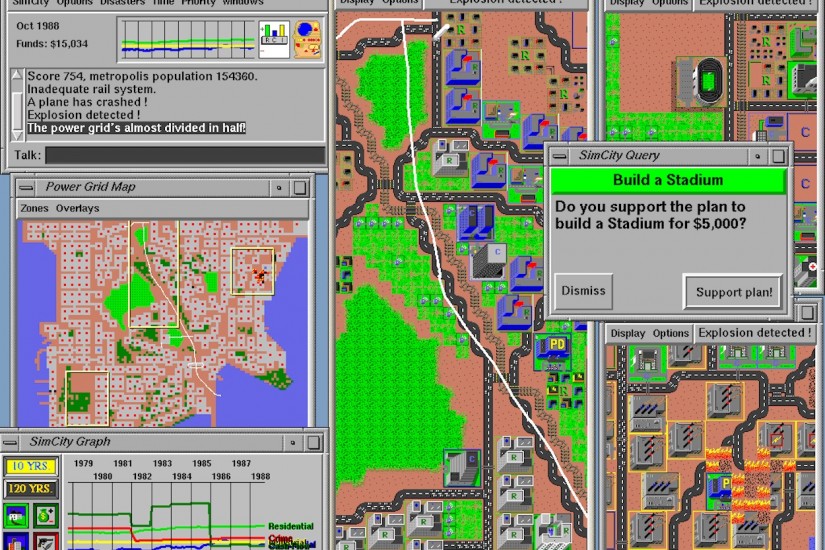In 1984, the developer Will Wright had just finished work on his first video game, a shoot-em-up called Raid on Bungeling Bay. In it, the player controls a helicopter dropping bombs on enemy targets on a series of islands. Wright was happy with the game, which was a commercial and critical success, but even after it was released, he continued tinkering with the terrain editor he had used to design Raid’s levels. “I found out,” Wright later told the Onion AV Club, “that I was having a lot more fun doing that part than just playing the game and going around bombing stuff.” Enthralled by the islands he was making, Wright kept adding features to his level editor, adding complex elements like cars, people, and houses. He became fascinated with the idea of making these islands behave more like cities, and kept tinkering with ways to make the world “come alive and be more dynamic.”
Looking to understand how real cities worked, Wright came across a 1969 book by Jay Forrester called Urban Dynamics. Forrester was an electrical engineer who had launched a second career as an expert on computer simulation; Urban Dynamics deployed his simulation methodology to offer a controversial theory of how cities grew and declined. Wright used Forrester’s theories to transform the cities he was designing in his level editor from static maps of buildings and roads into vibrant models of a growing metropolis. Eventually, Wright became convinced that his “guinea-pig city” was an entertaining, open-ended video game. Released in 1989, the game became wildly popular, selling millions of copies, winning dozens of awards, and spawning an entire franchise of successors and dozens of imitators. It was called SimCity.
Almost as soon as SimCity came out, journalists, academics, and other critics began to speculate on the effects that the game might have on real-world planning and politics. Within a few years of its release, instructors at universities across the country began to integrate SimCity into their urban planning and political science curriculums. Commentators like the sociologist Paul Starr worried that the game’s underlying code was an “unreachable black box” which could “seduce” players into accepting its assumptions, like the fact that low taxes promoted growth in this virtual world. “I became a total Republican playing this game,” one SimCity fan told the Los Angeles Times in 1992. “All I wanted was for my city to grow, grow, grow.”
Despite all this attention, few writers looked closely at the work which sparked Wright’s interest in urban simulation in the first place. Largely forgotten now, Jay Forrester’s Urban Dynamics put forth the controversial claim that the overwhelming majority of American urban policy was not only misguided but that these policies aggravated the very problems that they were intended to solve.
